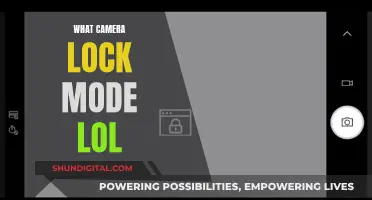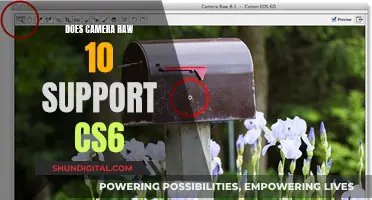
Traffic cameras in Texas are typically managed by local municipalities and law enforcement agencies, each with its own guidelines for retaining footage. While there is no standard timeframe for storing traffic camera footage, it is generally kept for a short period, ranging from 7 to 30 days, after which it may be permanently deleted. This is in contrast to places like Los Angeles, California, where traffic camera footage is stored for up to five years. The variation in retention periods highlights the importance of acting swiftly to obtain specific footage, as it may be crucial evidence for car accident claims and investigations.
| Characteristics | Values |
|---|---|
| Retention period | 7 to 30 days |
| Who manages the cameras? | Local municipalities and law enforcement agencies |
| Who controls the release of footage? | The entities controlling the cameras |
What You'll Learn

Texas traffic camera footage is typically stored for 7-30 days
Traffic cameras in Texas are typically managed by local municipalities and law enforcement agencies, each with its own guidelines for retaining footage. In general, these agencies retain traffic camera footage for a period ranging from 7 to 30 days. The Texas Department of Transportation (DOT), toll road authorities, and local municipalities may not retain footage for an extended period, so it is crucial to act swiftly if specific footage is required.
The storage duration of traffic camera footage can vary depending on the entity operating the cameras. While some cameras are managed by government agencies, certain private video cameras, such as those installed in businesses, might capture accidents and store the footage for a more extended period.
It is important to note that traffic cameras are usually triggered by specific events, such as instances of speeding or running red lights. Therefore, they do not continuously record the events leading up to an accident, and relying solely on traffic camera recordings may not provide a comprehensive account of the incident.
The process of obtaining traffic camera footage also varies based on the entity controlling the cameras. Each entity has its own procedures and regulations governing the release of such footage. In some cases, a subpoena may be necessary to recover the footage.
Additionally, not all intersections in Texas are equipped with traffic cameras. They are typically installed at busy intersections or areas with a higher frequency of collisions. Some intersections may have older camera models that capture low-quality photographs instead of sustained videos, while others may have dummy cameras as deterrents against careless driving behaviour.
Accessing Luma Surveillance Cameras Remotely: A Step-by-Step Guide
You may want to see also

The Texas Department of Transportation (DOT) deletes footage quickly
The swift deletion of footage by the Texas DOT underscores the importance of prompt action following a car accident. Victims or individuals seeking evidence must act swiftly to secure and preserve valuable footage that can impact the outcome of their case or investigation. The short retention period highlights the time-sensitive nature of collecting evidence, particularly from cameras operated by the DOT and local entities.
While the Texas DOT and local municipalities retain footage for a limited time, certain private video cameras, such as those installed in businesses, may capture accidents and store the footage for a more extended period. This variation in storage duration underscores the need for individuals to be diligent in identifying and acquiring relevant footage promptly.
It is worth noting that traffic cameras in Texas are typically triggered by specific events, such as instances of speeding or running red lights. As a result, these cameras do not continuously record, and relying solely on their footage may not provide a comprehensive account of the events leading up to an accident. Therefore, alternative sources of evidence, such as witness statements, expert witness testimony, physical evidence, and photos from the scene, should also be considered to establish fault or support a claim.
In summary, the Texas Department of Transportation's quick deletion of footage underscores the urgency in obtaining evidence after a car accident. The short retention period is a critical factor to consider when seeking traffic camera footage, and individuals must act swiftly to ensure they don't miss out on valuable information that could impact their case or investigation.
How Police Car Cameras Work and Their Benefits
You may want to see also

Private cameras may store footage for longer
In Texas, traffic cameras are typically managed by local municipalities and law enforcement agencies, each with its own guidelines for retaining footage. The footage is generally stored for 7 to 30 days, after which it may be permanently deleted. This means that if someone needs to obtain specific footage, they must act quickly. The Texas Department of Transportation (DOT), toll road authorities, and local municipalities are unlikely to retain footage for an extended period.
However, private cameras may store footage for longer. Certain private video cameras, such as those installed in businesses, may capture accidents occurring nearby. In such cases, the relevant footage may be stored for a more extended period. This could be beneficial for individuals seeking evidence to support insurance claims or legal proceedings.
Private cameras installed in businesses or other locations may have different storage capacities and settings, allowing them to retain footage for a longer duration. This extended storage period can be advantageous for individuals seeking evidence or information related to an accident or incident. It is important to note that the storage duration of private camera footage may vary, and it is always a good idea to act promptly when seeking footage.
If you are involved in an accident in Texas and require footage as evidence, it is advisable to seek legal assistance. Experienced lawyers can help locate and recover surveillance footage from private cameras, increasing the chances of a successful claim. They can guide you through the process of obtaining footage, which may vary depending on the entity controlling the cameras.
Traffic Cameras: Reducing Accidents or a Privacy Concern?
You may want to see also

Red light cameras are banned, but some remain
Red light cameras have been banned in Texas since June 2019. However, some municipalities have been able to keep their red light cameras operational due to a provision in the law that allows them to fulfil their existing contracts. This provision has allowed cities such as Austin, San Antonio, Houston, and two suburbs of San Antonio, Balcones Heights and Leon Valley, to retain their red light cameras.
The use of red light cameras, also known as photographic traffic signals, was outlawed in Texas due to safety and privacy concerns. Studies have shown that red light cameras do not effectively reduce the overall number of accidents or injuries. Additionally, there are constitutional concerns about the accuracy of these cameras, as they target the license plate rather than the driver. This can result in incorrect ticketing and shift the burden of proof onto the defendant.
While red light cameras are prohibited, other types of traffic cameras are still in use in Texas. These cameras are typically managed by local municipalities and law enforcement agencies, such as the Texas Department of Transportation (DOT) and toll road authorities. The retention period for traffic camera footage varies depending on the entity operating the cameras, but it generally ranges from 7 to 30 days. It is important to act swiftly to obtain specific footage, as the recordings may be permanently deleted after this retention period.
Traffic camera footage can be valuable evidence in car accident cases, but it has limitations. These cameras are usually triggered by specific events, such as speeding or running red lights, and may not capture the events leading up to an accident. Therefore, alternative forms of evidence, such as witness statements, expert witness testimony, physical evidence, and photos from the scene, are also crucial for establishing fault in car accident claims.
The Evolution of Computers: Integrated Cameras
You may want to see also

Traffic cameras don't record continuously
Traffic cameras are a common sight across cities in the United States, and their presence invites questions about their functionality, capabilities, and purpose. While they are often seen at busy intersections or areas with a higher frequency of collisions, it is a misconception that traffic cameras record continuously.
Traffic cameras are typically triggered by specific events, such as instances of speeding or running red lights. They are designed to capture crucial moments of traffic violations, providing clear and concise evidence for law enforcement. This means that they usually only record in short bursts, typically around 12 seconds, which is sufficient to capture the violation without needing continuous surveillance. For example, red-light cameras are activated when a vehicle crosses the line after the light turns red, while speed cameras capture footage when a vehicle exceeds the speed limit.
The limitation of this is that traffic cameras may not capture the lead-up to an incident or its aftermath, which could be crucial in certain cases. Additionally, they are usually positioned to capture license plates and the vehicle's position, rather than the interior of the vehicle or the driver's actions. This means that in cases of distracted or intoxicated driving, the camera may not provide evidence of the driver's behaviour.
Furthermore, most traffic cameras do not have indefinite storage capacity. Footage is often stored for a limited time, ranging from 7 to 30 days, before being deleted or overwritten. This means that if footage is required for evidence, it is crucial to act swiftly and secure it as soon as possible.
In summary, while traffic cameras are valuable tools for traffic law enforcement and road safety, they do not record continuously. Their purpose is to capture short, event-triggered footage of traffic violations, and the retention of this footage is limited, making timely retrieval important.
Car Cameras in North Carolina: Are They Legal?
You may want to see also
Frequently asked questions
In Texas, traffic cameras are usually managed by local municipalities and law enforcement agencies, each of which may have its own guidelines for retaining footage. In general, these agencies retain traffic camera footage for a period ranging from 7 to 30 days.
The duration for which the footage is stored varies from one jurisdiction to another. In general, most jurisdictions keep the footage for a period of 30 to 90 days before it is deleted or overwritten.
Several factors can affect how long traffic camera footage is stored, including the type of violation being monitored, the location of the camera, and whether a violation was detected.
The process for obtaining traffic camera footage can vary depending on the entity that controls the camera. In some cases, you may need to file a subpoena to recover the footage.







